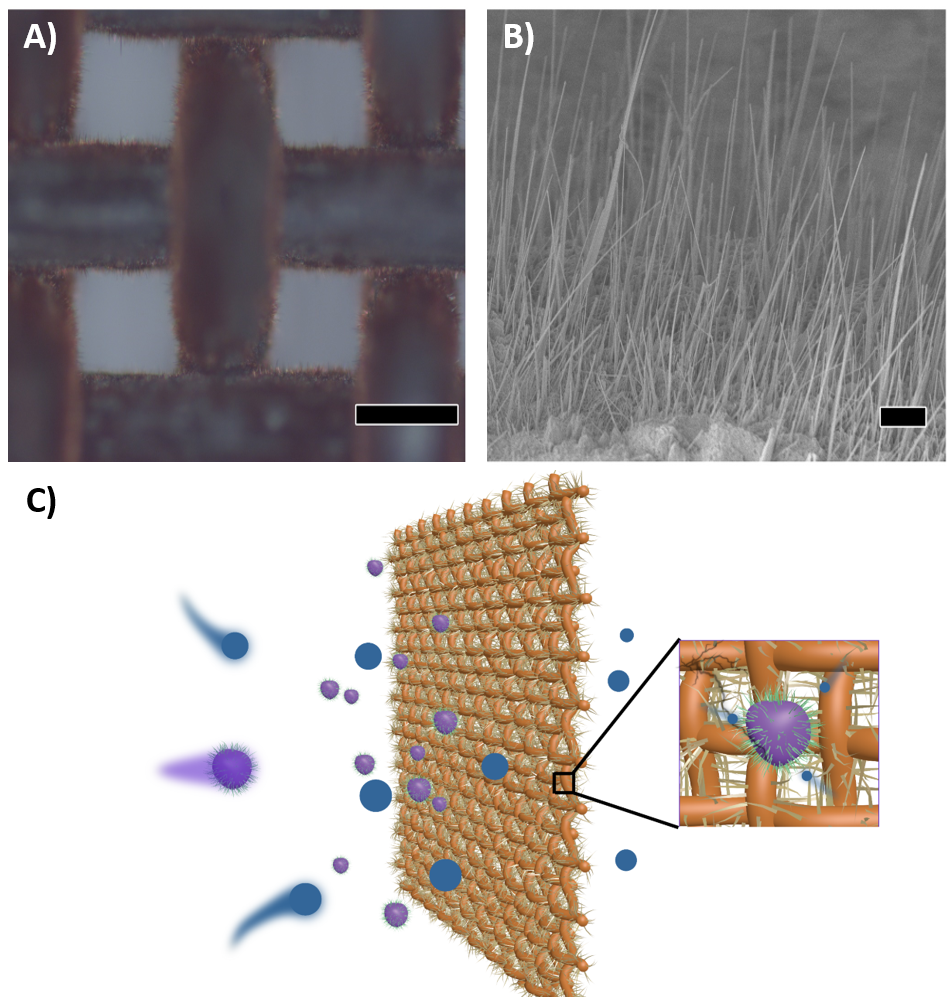Improving Air Quality
Anti-microbial Filters
Deactivation of airborne microbes in HVAC systems
Heating, ventilation, and air conditioning (HVAC) systems are one of the most common methods to improve indoor air quality. However, after long-term operation, the HVAC filter can accumulate microbes which may be subsequently released into the filtered air. While there are methods to address this issue, such as UV irradiation, photocatalytic oxidation, and microwave technology, they can be costly. These methods require a lot of power to function and sometimes a complete renovation of the HVAC system. Therefore, there is a need for a more cost-efficient approach to filter out microbes. VCU researchers have developed an anti-microbial filter that is more cost-efficient as it is able to inactivate more microbes while requiring less power to function.
The technology
The developed filters are fabricated by inducing growth of iron oxide nanowires on iron mesh. With the application of a low direct voltage, the iron oxide nanowires react with oxygen and water in the air to produce OH-. The electrical fields at the tips of the nanowires also lead to electroporation and joule heating effects. All of these mechanisms contribute to the inactivation of microbes on the filter which can reach a capture and inactivation efficiency of up to 98.7%. These filters could also be adapted for clean water technology in order to control waterborne microbes and other contaminants.

Figure 1: A) Optical microscopy image of the iron mesh with nanowires; B) SEM image of the nanowires themselves;
C) Representation of the nanowire iron mesh capturing and inactivating microbes.
